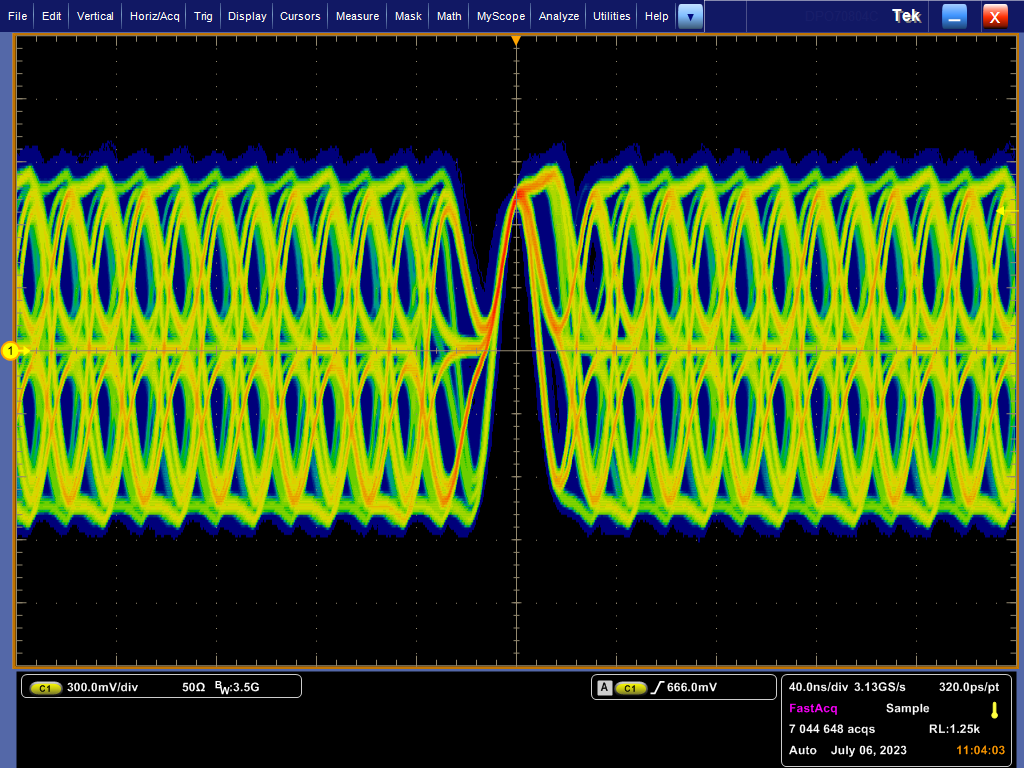SNLA431 January 2024 DP83TC812R-Q1 , DP83TC812S-Q1
- 1
- Trademarks
- 1Preface
- Notational Conventions
- 2Related Documentation
- 3Support Resources
-
4Troubleshooting the PHY Application
- 4.1 Schematic and Layout Checklist
- 4.2 Verify Successful Power-up of PHY
- 4.3 Peripheral Pin Checks
- 4.4 Register Dump Comparison
- 4.5 Verifying Strap Configurations
- 4.6 Check the MDI Signal
- 4.7 Link Up Failed Common Issues
- 4.8 Signal Quality Check
- 4.9 Power Up Timing
- 4.10 Loopback Testing
- 4.11 Debugging the MAC Interface
- 4.12 Verify Open Alliance PMA Compliance
- 4.13 Tools and References
- 5Conclusion
4.6 Check the MDI Signal
Check for the presence of a signal on the MDI to confirm the PHY is in master mode and the transmitter is operational. Note in slave mode the MDI is silent.
With link partner disconnected, set the PHY to MDI master and place a 100Ω resistor between the pins of the automotive connector (or use an automotive compliance fixture) and use a differential probe to measure the output signal on an oscilloscope. Shown below is the expected signal. In a later section, Section 4.12, we verify the transmitter characteristics are meeting Open Alliance compliance standards. For now, the presence of signal here indicates the PHY is receiving power, reference clock, and is not in sleep mode.
 Figure 4-4 DP83TC812 Master Idle
Symbol
Figure 4-4 DP83TC812 Master Idle
Symbol